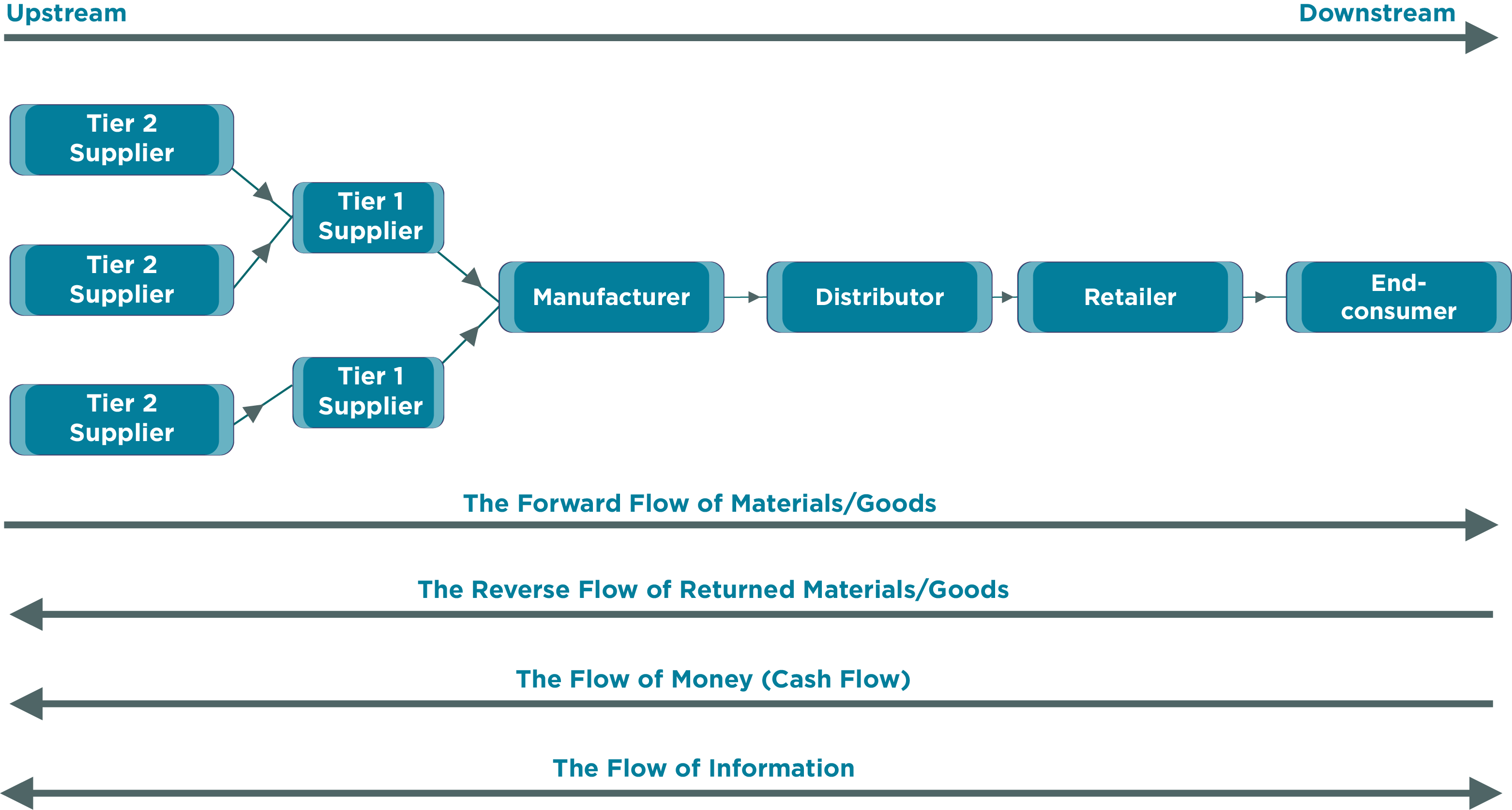7.2 Managing Main Flows in the Supply Chain
Supply chains are governed by three fundamental flows: the flow of materials/goods, the flow of money/cash, and the flow of information. These flows are intrinsically linked and essential for the efficient operation of any supply chain.
Material/Goods Flow
The material/goods flow represents the physical movement of products along the supply chain. It typically follows a forward direction, originating from higher-tier suppliers (upstream) and progressing toward the end consumer (downstream). However, in returns or reverse logistics cases, a reverse flow of materials/goods occurs in the opposite direction.
Cash Flow
The cash flow, or the flow of money, moves in the opposite direction to the material/goods flow. It originates from downstream entities, such as retailers, who pay distributors or manufacturers for the goods received. This flow continues upstream, with each participant in the supply chain receiving payment for their contributions.
Information Flow
The flow of information is bidirectional, enabling effective communication and coordination among supply chain partners. Organizations share various types of information, including demand forecasts, inventory levels, production schedules, and logistics data. This exchange of information facilitates better decision-making and optimizes the overall performance of the supply chain.
Synchronization and Optimization
Effective supply chain management requires the seamless integration and synchronization of these three flows. By aligning the material/goods flow with the cash flow and leveraging the flow of information, organizations can streamline operations, reduce waste, and enhance customer satisfaction. Advanced technologies and collaborative practices enable real-time monitoring and optimization of these flows, driving efficiency and competitiveness within the supply chain.

Image Description
This diagram illustrates the various stages and flows within a supply chain, highlighting the upstream and downstream activities. The diagram is organized as follows:
- Upstream (on the left side of the diagram):
- Tier 2 Suppliers: There are three boxes labelled “Tier 2 Supplier,” indicating the suppliers that provide raw materials or components to the Tier 1 suppliers.
- Tier 1 Suppliers: Two boxes labelled “Tier 1 Supplier” receive inputs from Tier 2 Suppliers and pass their outputs to the manufacturer.
- Downstream (on the right side of the diagram):
- Manufacturer: The manufacturer receives components from Tier 1 Suppliers, processes them, and forwards the products to the distributor.
- Distributor: The distributor receives products from the manufacturer and distributes them to retailers.
- Retailer: The retailer receives products from the distributor and sells them to the end-consumer.
- End-consumer: The final recipient of the product in the supply chain.
- Flow Descriptions:
- The Forward Flow of Materials/Goods: An arrow at the top indicates the movement of materials and goods from upstream to downstream.
- The Reverse Flow of Returned Materials/Goods: An arrow below the forward flow indicates the movement of returned goods from the end-consumer back up the supply chain.
- The Flow of Money (Cash Flow): An arrow indicates the flow of money in the opposite direction, from the end-consumer to the upstream suppliers.
- The Flow of Information: An arrow at the bottom indicates the bidirectional flow of information throughout the supply chain.
Video: “What is Supply Chain Management? Definition, Introduction, Process & Examples | AIMS UK” by AIMS Education, UK [12:07] is licensed under the Standard YouTube License. Transcript and closed captions available on YouTube.
“Supply Chain” from Introduction to Operations Management Copyright © by Hamid Faramarzi and Mary Drane is licensed under a Creative Commons Attribution-NonCommercial-ShareAlike 4.0 International License, except where otherwise noted.—Modifications: used section Managing Main Flows in the Supply Chain, some paragraphs rewritten; added additional explanations.

